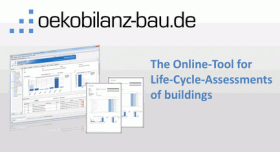19.08.2016 Polybrominated diphenyl ethers (PBDE), polybrominated biphenyls (PBB), tris (2-chloroethyl) phosphate (TCEP) and hexabromocyclododecane (HBCD) are widely used as flame retardants in products. In DGNB system, these substances are examined in order to avoid the negative effects on humans and the environment.

Bild: © flukesamed – Fotolia.com
Flame retardants in construction products
Polybrominated diphenyl ethers (PBDE), polybrominated biphenyls (PBB) and hexabromocyclododecane (HBCD) are some of the brominated flame retardants belonging to a group of halogenated flame retardants. These are often adaptively incorporated into plastics for insulation materials, floor coverings, wallpaper etc. Tris (2-chloroethyl) phosphate (TCEP) is an organophosphorus flame retardant, which is mainly contained in PUR materials.
Effects on humans and the environment
Flame retardants can be released from their host materials and thereby contaminate indoor air quality. PBDE, PBB, HBCD and TCEP were proven to do so in recent years with an increasing concentration measured in house dust, blood and breast milk. These substances can damage the human nervous and reproductive systems and as such are classified as carcinogenic. Further investigation showed that HBCD and PBDE especially are very toxic to aquatic organisms.
Hexabromocyclododecane (HBCD) and tris (2-chloroethyl) phosphate (TCEP) were included on the SVHC candidate list due to the very high concern regarding these substances.
Examination of PBDE, PBB, TCEP and HBCD in DGNB certification and other systems
In DGNB criterion ENV 1.2 “Risks to the Local Environment,” various materials are examined in terms of their ingredients in order to avoid the use of environmentally damaging products. Polybrominated diphenyl ethers (PBDE), polybrominated biphenyls (PBB), tris (2-chloroethyl) phosphate (TCEP) and hexabromocyclododecane (HBCD) are examined among flame-retardant construction products, such as insulation materials, wall coverings, waterproofing and adhesives. According to DGNB, fiberglass wallpaper, paint tarps and decorative nonwoven materials are required not to use chlorinated paraffins in order to achieve quality level 3 and 4, and the amount of PBB, PBDE and TCEP must be less than 0.1%.
These materials are also examined in other systems, such as Cradle to Cradle certification and the REACH regulation.
We are happy to assist you with the classification of your products according to DGNB criteria. >> contact

 English
English










